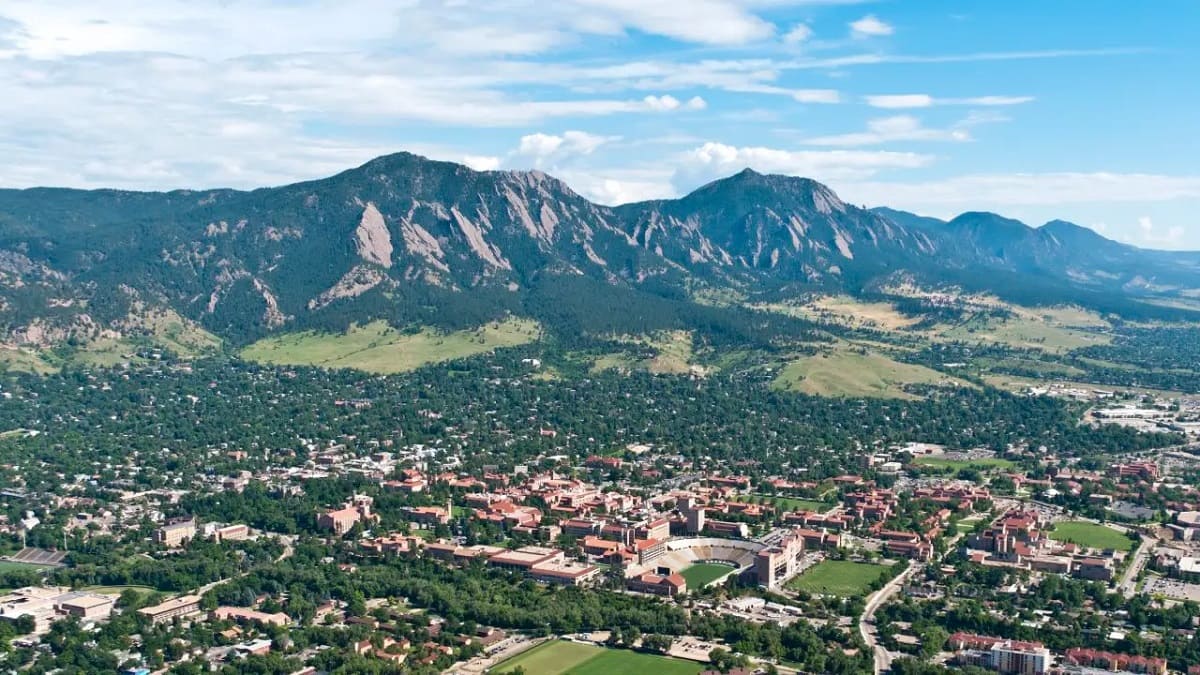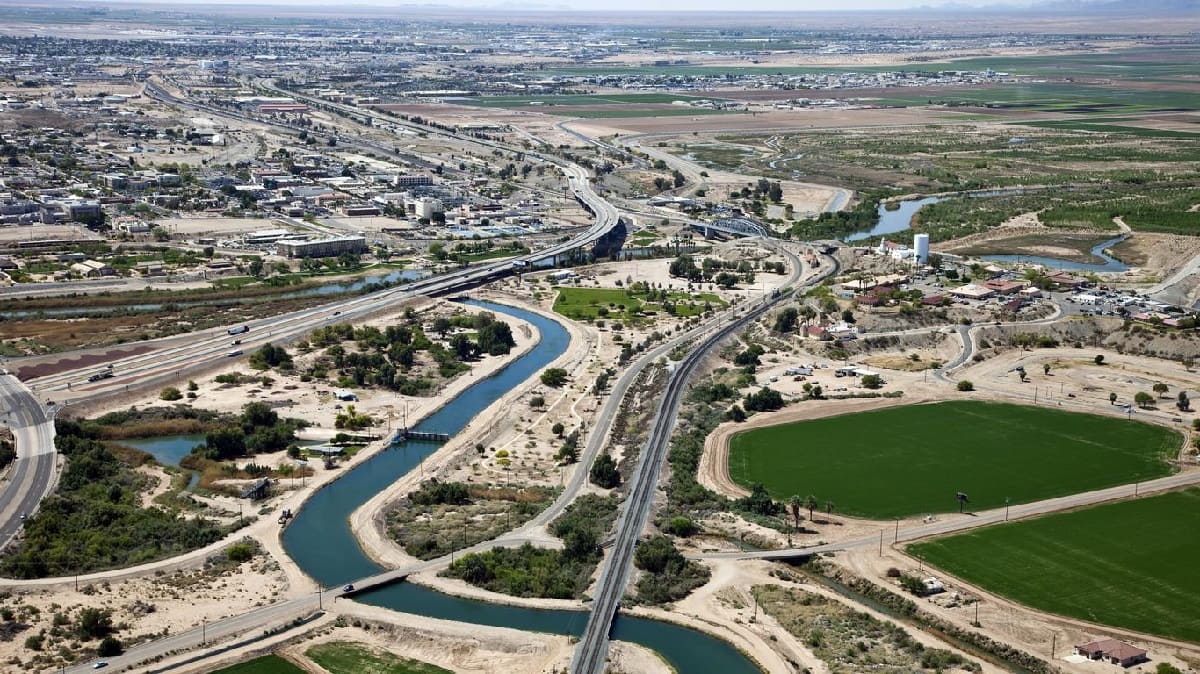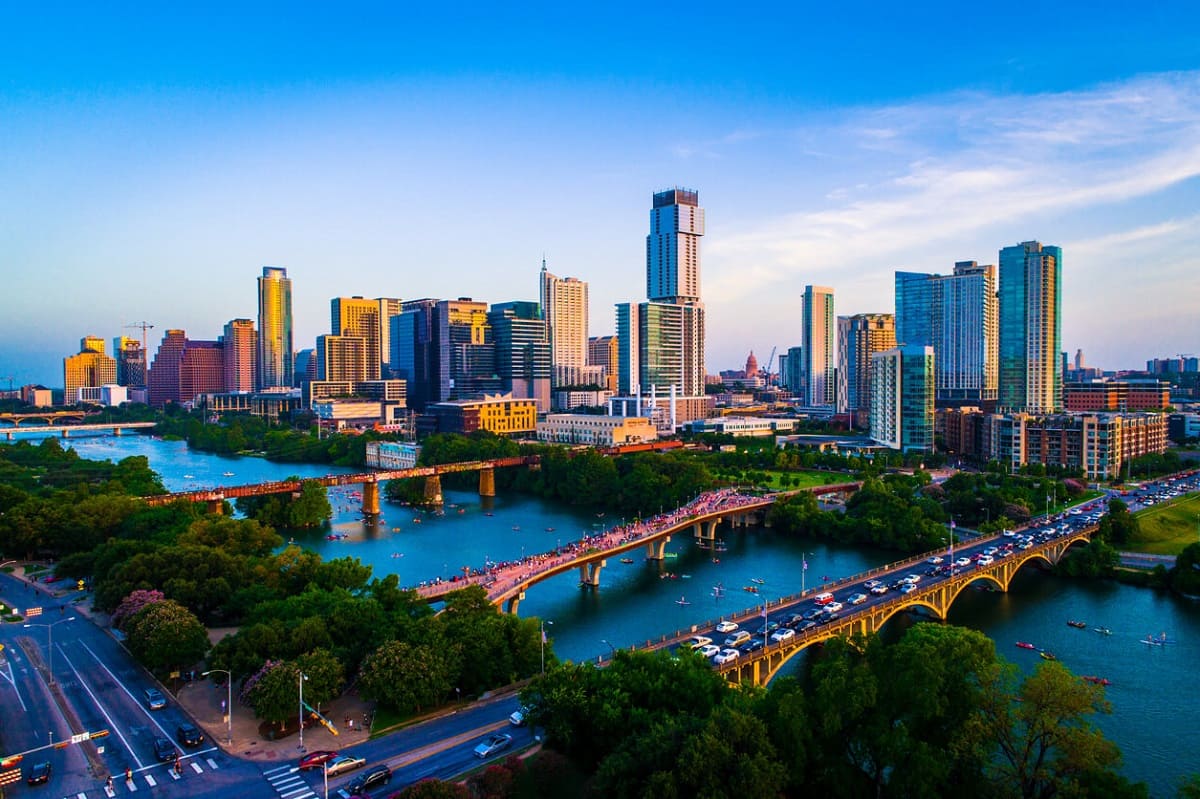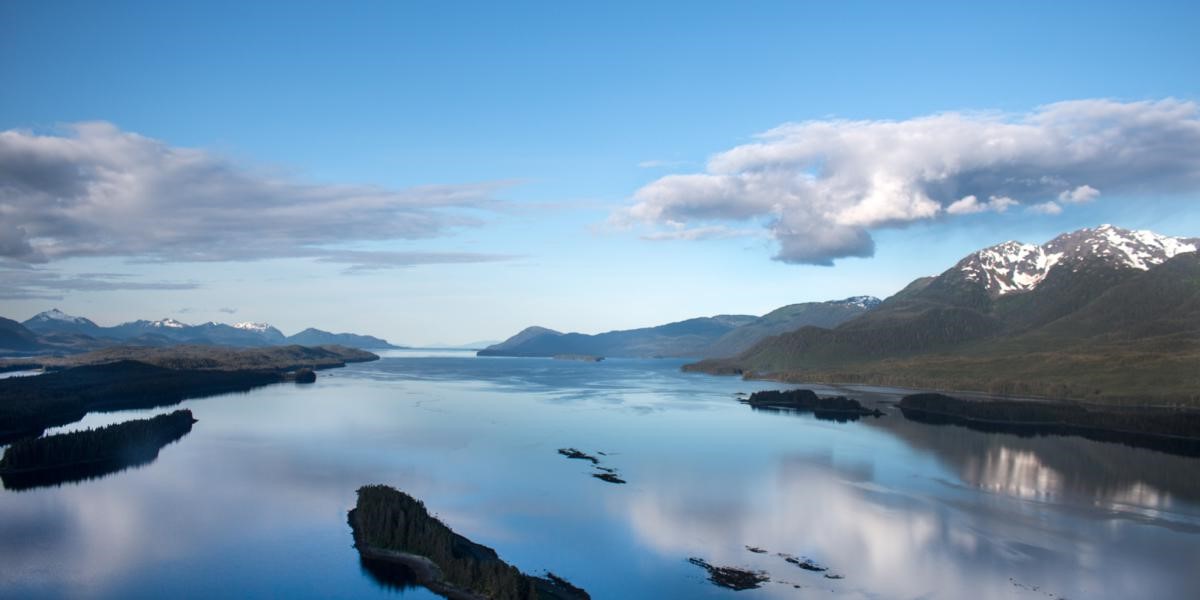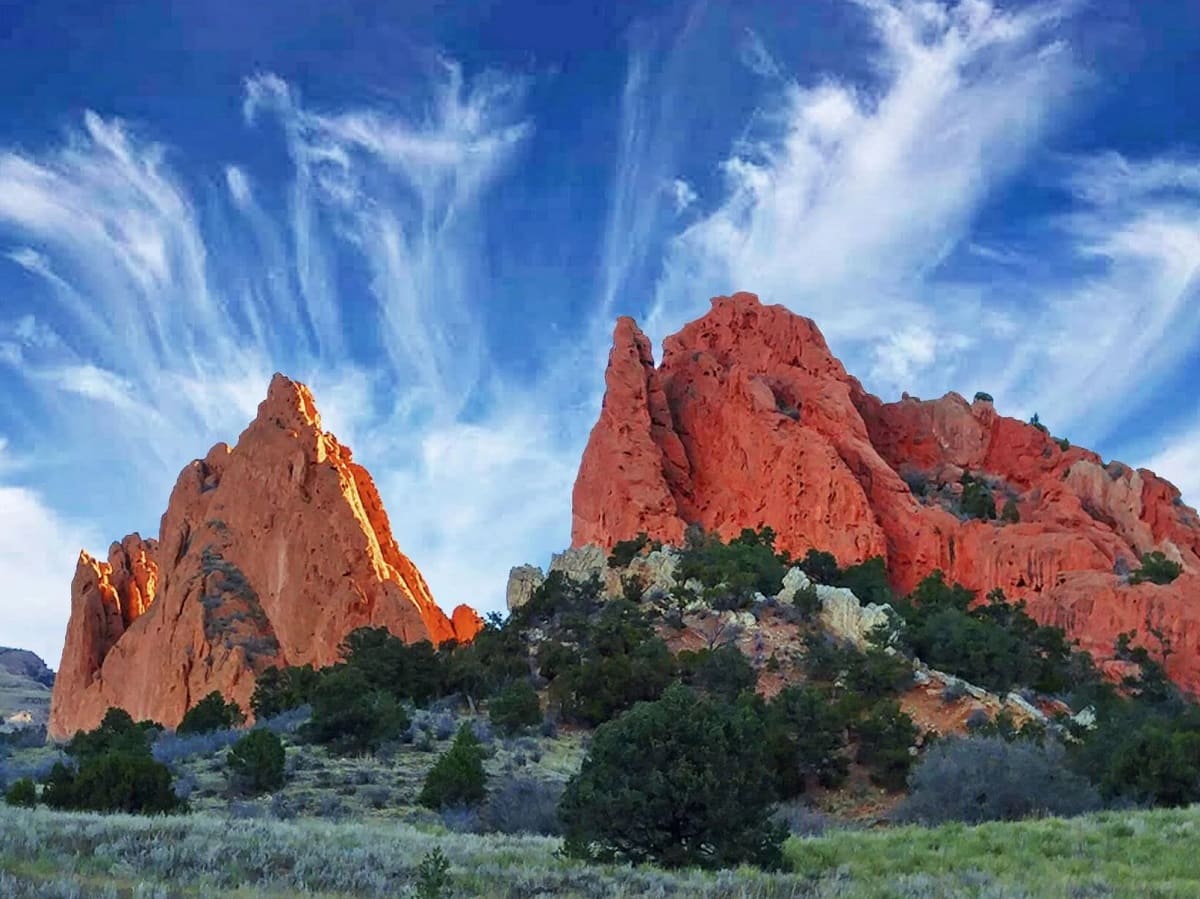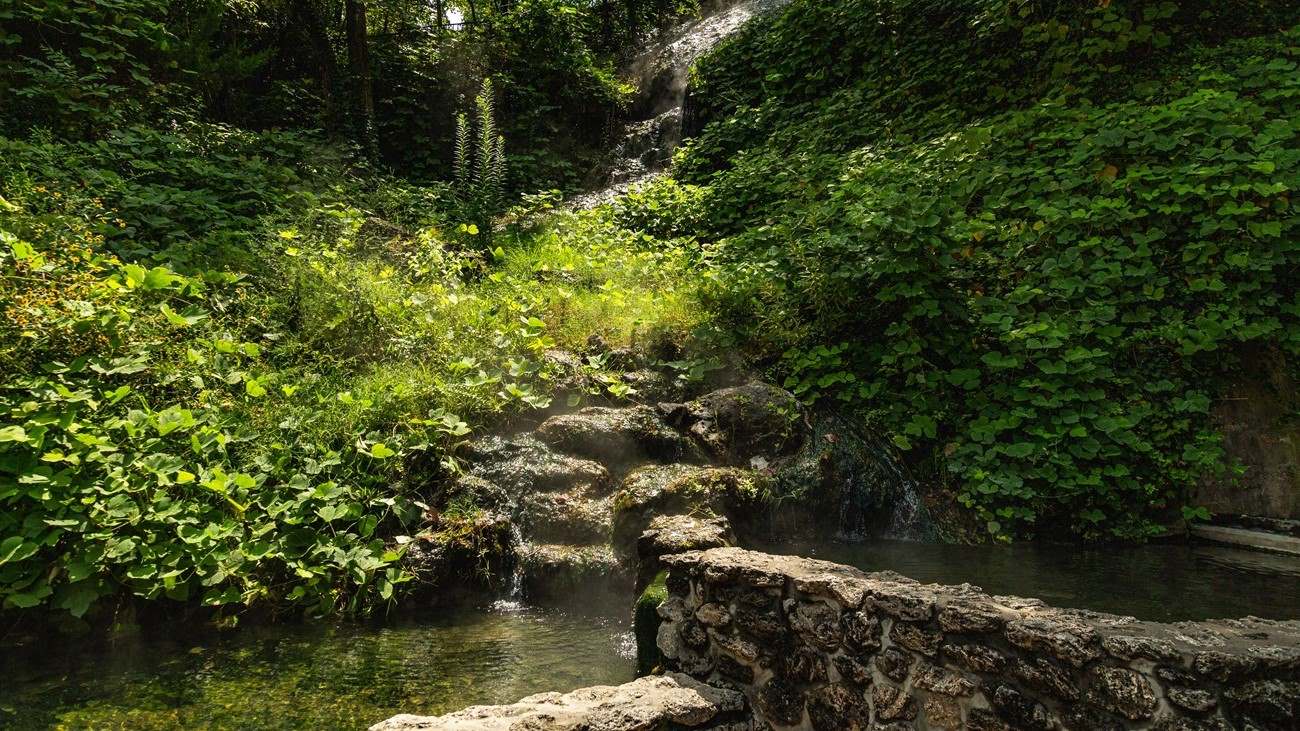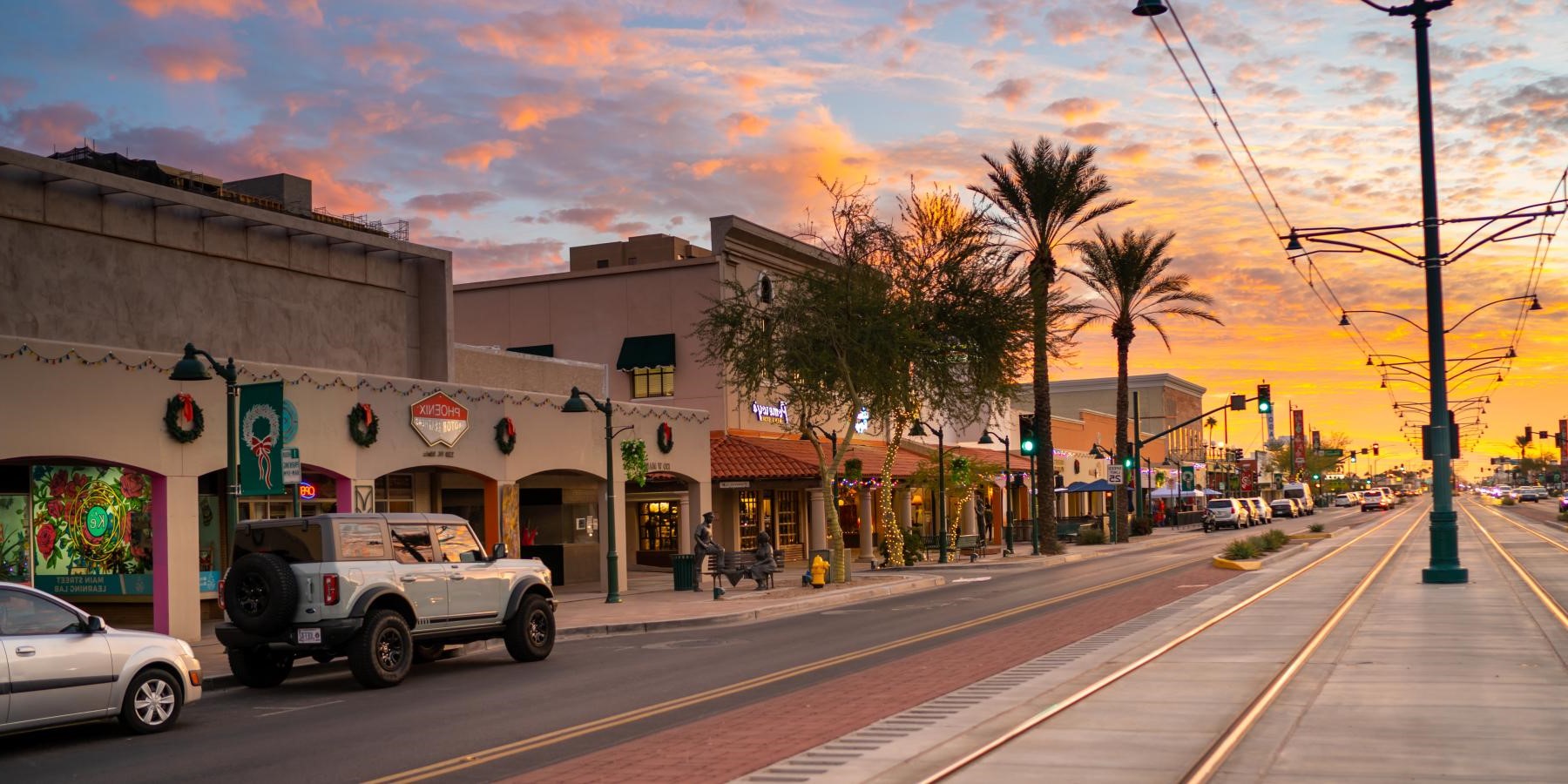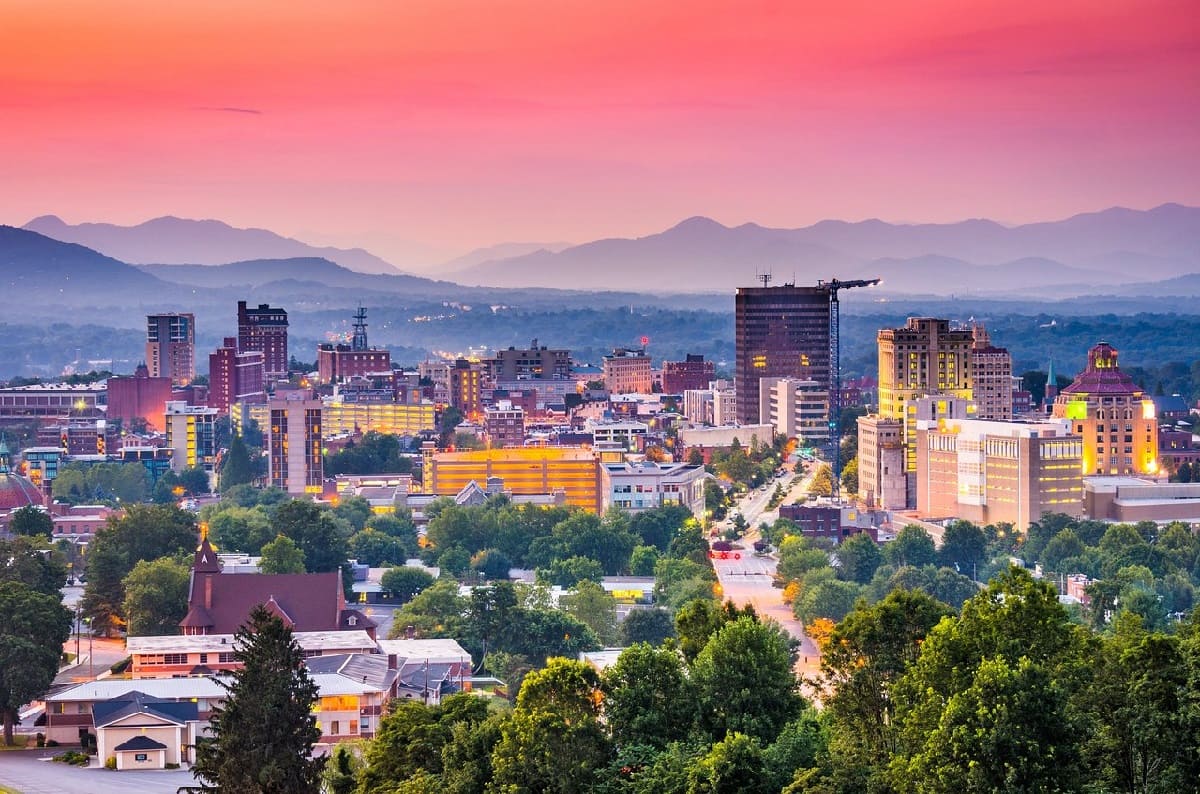Home>Weather and Climate>Albuquerque Weather: A Comprehensive Guide To Year-Round Climate
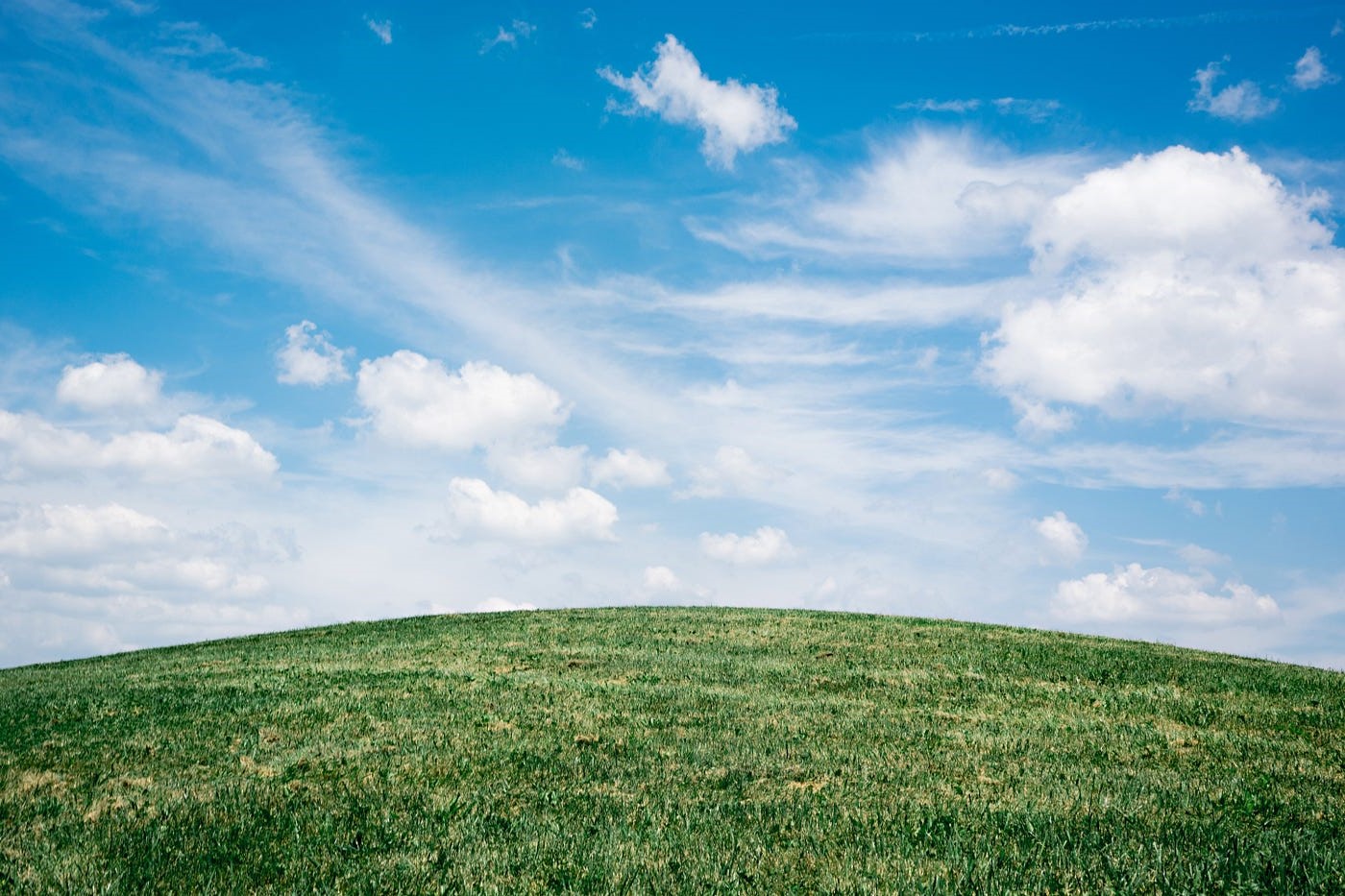

Weather and Climate
Albuquerque Weather: A Comprehensive Guide To Year-Round Climate
Published: March 6, 2024
Discover the diverse weather and climate of Albuquerque with our comprehensive guide, providing insights into the year-round conditions and seasonal variations. Gain valuable knowledge to plan your activities and prepare for any weather changes.
(Many of the links in this article redirect to a specific reviewed product. Your purchase of these products through affiliate links helps to generate commission for Temperatures.com, at no extra cost. Learn more)
Table of Contents
Introduction
Albuquerque, New Mexico, is a city renowned for its diverse and captivating climate. Nestled in the high desert, this vibrant metropolis experiences a unique blend of weather patterns that contribute to its distinct character. From scorching summers to crisp winters, Albuquerque's climate offers a rich tapestry of experiences for residents and visitors alike.
Throughout the year, Albuquerque showcases its dynamic weather, creating a captivating backdrop for outdoor adventures, cultural events, and everyday life. Understanding the nuances of the city's climate is essential for making the most of any visit or for those considering making Albuquerque their home.
In this comprehensive guide, we will delve into the intricacies of Albuquerque's weather and climate, providing valuable insights into the city's four distinct seasons, average temperatures, precipitation patterns, and unique weather-related phenomena. Additionally, we will explore the diverse range of activities and events that are influenced by Albuquerque's weather, offering a deeper understanding of how the climate shapes the city's culture and lifestyle.
Whether you are planning a trip to Albuquerque, considering a move to this vibrant city, or simply seeking to expand your knowledge of weather and climate, this guide will serve as an invaluable resource. By the end of this journey, you will have gained a profound appreciation for the captivating and ever-changing weather that defines Albuquerque throughout the year. So, let's embark on this enlightening exploration of Albuquerque's weather and climate, uncovering the secrets of its atmospheric tapestry.
Read more: Tennessee Weather: A Year-Round Overview
Understanding the Four Seasons in Albuquerque
Albuquerque's climate is characterized by four distinct seasons, each offering a unique and captivating experience. Understanding the nuances of these seasons is essential for fully appreciating the city's dynamic weather patterns.
Spring
As winter transitions into spring, Albuquerque comes alive with a burst of vibrant colors and rejuvenation. The city's landscape is adorned with blossoming wildflowers, and the iconic cottonwood trees along the Rio Grande begin to leaf out, creating a picturesque scene. The average temperatures in spring range from mild to warm, making it an ideal time for outdoor activities such as hiking in the Sandia Mountains or exploring the city's numerous parks and botanical gardens.
Summer
Summer in Albuquerque brings long, sunny days and warm to hot temperatures, making it the perfect season for outdoor enthusiasts. With an average of 310 days of sunshine per year, residents and visitors alike can enjoy a plethora of outdoor activities, including hot air ballooning, hiking, and exploring the city's cultural festivals. However, it's important to be prepared for the occasional afternoon thunderstorm, which can provide a refreshing break from the heat.
Fall
As summer fades into fall, Albuquerque's landscape undergoes a stunning transformation. The city is enveloped in warm hues as the cottonwood trees and other foliage begin to change color. The temperatures become comfortably mild, creating an inviting atmosphere for exploring the city's historic neighborhoods, attending fall festivals, and embarking on scenic drives to witness the breathtaking fall foliage in the surrounding areas.
Winter
Winter in Albuquerque is characterized by crisp, clear days and cooler temperatures, with occasional snowfall gracing the Sandia Mountains, creating a picturesque backdrop for the city. The winter season offers a unique opportunity to experience the city's cultural events, such as the River of Lights at the ABQ BioPark and the traditional luminarias that adorn neighborhoods during the holiday season.
By understanding the distinct characteristics of each season in Albuquerque, residents and visitors can fully embrace the city's diverse climate and make the most of the unique experiences that each season has to offer. Whether it's reveling in the vibrant colors of spring, savoring the long days of summer, admiring the fall foliage, or embracing the winter traditions, Albuquerque's four seasons provide a rich tapestry of experiences for all to enjoy.
Average Temperatures Throughout the Year
Albuquerque's climate is characterized by a wide range of temperatures throughout the year, offering a diverse and captivating experience for residents and visitors. Understanding the average temperature patterns is essential for planning outdoor activities, packing appropriate clothing, and gaining a comprehensive insight into the city's climate dynamics.
Spring
During the spring months of March, April, and May, Albuquerque experiences a gradual transition from the cooler temperatures of winter to the warmth of summer. The average high temperatures in March range from 60°F to 65°F, gradually increasing to 70°F to 75°F in April, and reaching 80°F to 85°F in May. The evenings and early mornings tend to be cooler, with average low temperatures ranging from 35°F to 45°F in March, 40°F to 50°F in April, and 45°F to 55°F in May.
Summer
Summer in Albuquerque is characterized by long, sunny days and warm to hot temperatures. The average high temperatures in June, July, and August range from 90°F to 95°F, with occasional spikes above 100°F during the peak of summer. The evenings offer some relief from the daytime heat, with average low temperatures ranging from 60°F to 65°F. It's important to note that the city's high elevation can lead to cooler evenings, providing a pleasant contrast to the daytime warmth.
Fall
As summer transitions into fall, Albuquerque experiences a gradual cooling of temperatures, creating a comfortable and inviting atmosphere. The average high temperatures in September range from 80°F to 85°F, gradually decreasing to 70°F to 75°F in October, and further dropping to 60°F to 65°F in November. The evenings become noticeably cooler, with average low temperatures ranging from 45°F to 50°F in September, 35°F to 40°F in October, and 25°F to 30°F in November.
Winter
Winter in Albuquerque brings cooler temperatures, occasional snowfall, and a crisp, refreshing atmosphere. The average high temperatures in December, January, and February range from 45°F to 50°F, with January typically being the coldest month. The evenings and early mornings can be quite chilly, with average low temperatures ranging from 20°F to 25°F, creating a winter wonderland in the surrounding mountains while the city itself experiences milder conditions.
By understanding the average temperature patterns throughout the year, individuals can effectively plan their activities and prepare for the varying weather conditions that define Albuquerque's climate. Whether it's embracing the warmth of summer, savoring the cool evenings of fall, or experiencing the occasional snowfall of winter, Albuquerque's diverse temperature range offers a rich tapestry of seasonal experiences for all to enjoy.
Precipitation Patterns and Rainfall Amounts
Albuquerque's precipitation patterns and rainfall amounts play a crucial role in shaping the city's landscape and ecosystem throughout the year. Understanding the distribution of rainfall and the impact it has on the environment is essential for gaining a comprehensive insight into Albuquerque's climate dynamics.
The city experiences a semi-arid climate, characterized by relatively low annual precipitation levels and a notable variation in rainfall patterns. On average, Albuquerque receives around 9 inches of precipitation per year, with the majority of the rainfall occurring during the summer monsoon season. This seasonal variation in precipitation contributes to the city's unique ecosystem and influences various aspects of life in Albuquerque.
During the summer months, typically from July to September, Albuquerque experiences its primary period of rainfall, known as the monsoon season. This period is marked by the arrival of moisture-laden air from the Gulf of Mexico, which triggers the development of thunderstorms and localized downpours across the region. These intense but brief bursts of rainfall contribute significantly to the annual precipitation total, rejuvenating the landscape and providing essential moisture for plant life and agricultural activities.
In contrast, the winter months in Albuquerque are relatively dry, with minimal precipitation in the form of snowfall and occasional light rain. The surrounding mountains, particularly the Sandia Mountains to the east of the city, may receive more substantial snowfall, creating a picturesque winter backdrop for Albuquerque. However, the city itself experiences limited winter precipitation, contributing to its overall arid climate characteristics.
The distribution of rainfall and the seasonal variation in precipitation patterns have a profound impact on Albuquerque's natural environment, influencing the growth of native vegetation, the flow of rivers and streams, and the overall ecological balance of the region. Additionally, the city's water management and conservation efforts are closely tied to the availability of rainfall, making it a critical factor in sustaining Albuquerque's water resources and supporting its growing population.
By understanding the precipitation patterns and rainfall amounts in Albuquerque, residents and visitors can gain a deeper appreciation for the city's unique climate and the vital role that rainfall plays in shaping its environment. Whether it's witnessing the dramatic monsoon storms of summer or embracing the tranquility of the winter landscape, Albuquerque's precipitation patterns offer a captivating insight into the city's dynamic weather and its profound impact on the natural world.
Wind and Dust Storms in Albuquerque
Albuquerque, nestled in the high desert of New Mexico, is no stranger to the awe-inspiring forces of nature, including wind and dust storms that punctuate its climate. The city's unique geographical location, surrounded by vast expanses of arid land, sets the stage for the occasional arrival of intense wind and dust storms, creating dramatic and visually striking phenomena that leave a lasting impression on residents and visitors alike.
During the spring and summer months, Albuquerque experiences an increase in wind speeds, often accompanied by the arrival of dust storms, locally referred to as "haboobs." These dust storms are characterized by towering walls of dust and sand that sweep across the landscape, driven by powerful gusts of wind. The arrival of a haboob can transform the city's skyline, engulfing the surroundings in a surreal haze and dramatically reducing visibility.
The occurrence of wind and dust storms in Albuquerque is attributed to several factors, including the city's proximity to arid regions, the presence of strong pressure gradients, and the influence of weather systems that can generate intense winds. These atmospheric conditions converge to create the perfect recipe for the formation of dust storms, adding a touch of natural drama to Albuquerque's climate.
While wind and dust storms can create mesmerizing visual spectacles, they also pose challenges for residents and travelers. Reduced visibility and the presence of airborne dust particles can impact outdoor activities and transportation, requiring individuals to exercise caution and adapt to the rapidly changing weather conditions. Additionally, the arrival of dust storms serves as a reminder of the resilience of the natural environment and the powerful forces at play in shaping the landscape.
Despite the challenges posed by wind and dust storms, Albuquerque's residents have learned to adapt to these natural occurrences, incorporating them into the fabric of daily life. From preparing homes and vehicles for sudden gusts of wind to embracing the transient beauty of a dust-streaked sunset, the city's inhabitants have developed a deep appreciation for the dynamic nature of their environment.
In essence, wind and dust storms in Albuquerque are not merely weather events; they are powerful reminders of the city's connection to the natural world and the captivating forces that shape its climate. By embracing the occasional arrival of these atmospheric phenomena, residents and visitors gain a profound understanding of Albuquerque's resilience and the remarkable interplay between nature and urban life.
The presence of wind and dust storms in Albuquerque serves as a testament to the city's enduring spirit and its ability to weather the elemental forces that define its high desert home. As the winds ebb and flow, and the dust settles, Albuquerque stands as a testament to the captivating and ever-changing nature of its climate.
Weather-Related Activities and Events
Albuquerque's diverse climate sets the stage for a wide array of weather-related activities and events that showcase the city's vibrant culture and deep connection to its atmospheric tapestry. From outdoor adventures to cultural celebrations, Albuquerque offers a rich tapestry of experiences that are intricately woven into the fabric of its climate.
Hot Air Ballooning
One of the most iconic and beloved activities in Albuquerque is hot air ballooning. The city is renowned for hosting the annual Albuquerque International Balloon Fiesta, a spectacular event that draws balloon enthusiasts from around the world. Against the backdrop of the city's clear blue skies and stunning landscapes, hundreds of colorful balloons take to the air, creating a mesmerizing display that captures the imagination of all who witness it. Visitors can experience the thrill of a balloon ride, soaring above the Rio Grande Valley and taking in panoramic views of the surrounding mountains and desert terrain.
Hiking and Outdoor Exploration
Albuquerque's diverse climate and stunning natural landscapes make it an ideal destination for outdoor enthusiasts. The city is surrounded by a network of hiking trails that cater to all skill levels, offering opportunities to explore the rugged beauty of the Sandia Mountains, the expansive Petroglyph National Monument, and the serene bosque along the Rio Grande. Whether it's a leisurely stroll through the city's parks or a challenging trek through the wilderness, Albuquerque's outdoor offerings are as diverse as its climate.
Cultural Festivals and Events
Throughout the year, Albuquerque hosts a myriad of cultural festivals and events that are influenced by the city's climate and seasonal changes. From the vibrant celebrations of the Albuquerque Folk Festival in the spring to the traditional harvest festivals in the fall, the city's cultural calendar is intricately intertwined with the rhythm of its climate. Visitors can immerse themselves in the rich tapestry of music, art, and cuisine that reflects the diverse influences of Albuquerque's weather and the natural world.
Stargazing and Astronomy Events
Albuquerque's high elevation and clear skies make it an ideal destination for stargazing and astronomy enthusiasts. The city is home to world-class observatories and astronomy centers that offer unique opportunities to explore the wonders of the night sky. Whether it's attending a star party at the local observatory or embarking on a guided stargazing tour in the desert, Albuquerque's climate provides the perfect backdrop for celestial exploration.
Seasonal Markets and Fairs
The changing seasons in Albuquerque bring forth a vibrant array of seasonal markets and fairs that celebrate the city's climate and agricultural heritage. From the bustling farmer's markets in the summer to the festive holiday markets in the winter, residents and visitors can savor the flavors of locally grown produce, handcrafted goods, and traditional arts that are inspired by the city's diverse weather patterns.
In essence, Albuquerque's weather-related activities and events offer a captivating glimpse into the city's deep connection to its climate. Whether it's soaring through the skies in a hot air balloon, immersing in cultural celebrations, or exploring the natural wonders of the high desert, Albuquerque's dynamic climate serves as a backdrop for unforgettable experiences that resonate with the spirit of the city.
Tips for Dressing and Packing for Albuquerque Weather
When preparing for a visit to Albuquerque, it's essential to consider the city's diverse climate and varying weather conditions throughout the year. Whether you're planning a summer adventure or a winter retreat, understanding how to dress and pack for Albuquerque's weather will ensure that you are comfortable and well-prepared for any outdoor activities or explorations.
Layering is Key
Albuquerque's climate is known for its significant temperature fluctuations throughout the day, especially during the transitional seasons of spring and fall. To adapt to these changes, it's advisable to dress in layers. Start with a lightweight, moisture-wicking base layer to manage perspiration, followed by insulating layers such as a fleece or light jacket. This allows you to adjust your clothing as the temperature shifts, ensuring comfort and adaptability throughout the day.
Sun Protection
With over 300 days of sunshine annually, sun protection is crucial when venturing outdoors in Albuquerque. Packing a wide-brimmed hat, sunglasses with UV protection, and sunscreen with a high SPF rating will shield you from the intense high desert sun. Additionally, lightweight, long-sleeved shirts and pants made from breathable fabrics offer added protection while allowing airflow to keep you cool.
Footwear for Versatility
Whether you're planning to hike in the Sandia Mountains, stroll through the city's parks, or attend outdoor events, versatile footwear is essential. Comfortable walking shoes or hiking boots with good traction are ideal for exploring Albuquerque's diverse terrain. Additionally, packing a pair of sandals or breathable shoes provides relief during hot summer days while allowing your feet to breathe.
Weather-Appropriate Accessories
Depending on the season, it's beneficial to pack weather-appropriate accessories. During the summer, a compact, portable fan can provide relief from the heat, while a lightweight, packable rain jacket is essential for sudden summer showers. In the winter, thermal gloves, a warm hat, and a scarf will keep you comfortable during cooler temperatures, especially if you plan to explore higher elevations or enjoy outdoor winter activities.
Be Prepared for Wind and Dust
Given Albuquerque's occasional wind and dust storms, it's advisable to pack a lightweight scarf or bandana to shield your face and mouth from blowing dust particles. Additionally, having a pair of protective goggles or sunglasses with a snug fit can safeguard your eyes during windy conditions, ensuring clear vision and comfort.
Versatile Clothing for Day-to-Night Transitions
Albuquerque's climate often sees significant temperature drops in the evenings, particularly in the spring and fall. Packing versatile clothing that can transition from day to night is essential. Consider bringing a light jacket or sweater that can be easily added to your ensemble as the temperature cools in the evening, allowing you to extend your outdoor adventures comfortably.
By incorporating these tips into your packing and dressing strategies, you'll be well-equipped to embrace Albuquerque's diverse climate and make the most of your outdoor experiences. Whether you're embarking on a summer escapade or immersing in the winter wonders of the high desert, being prepared for Albuquerque's weather ensures that you can fully enjoy the city's captivating outdoor offerings.
Conclusion
Albuquerque's weather and climate offer a captivating journey through the four distinct seasons, each painting a unique portrait of the city's natural beauty and cultural vibrancy. From the rejuvenating bloom of spring to the sun-drenched days of summer, the warm hues of fall, and the tranquil charm of winter, Albuquerque's climate shapes a dynamic backdrop for a myriad of outdoor adventures, cultural celebrations, and everyday experiences.
The city's average temperatures fluctuate throughout the year, creating a diverse tapestry of weather conditions that cater to a wide range of preferences and activities. Whether it's basking in the warmth of summer, reveling in the cool evenings of fall, or embracing the occasional snowfall of winter, Albuquerque's climate offers a rich spectrum of seasonal experiences for all to savor.
The distribution of rainfall and the seasonal variation in precipitation patterns play a pivotal role in shaping Albuquerque's natural environment, influencing the growth of native vegetation, the flow of rivers and streams, and the overall ecological balance of the region. The dramatic arrival of wind and dust storms adds a touch of natural drama to the city's climate, serving as a testament to Albuquerque's resilience and its enduring spirit in the face of elemental forces.
Albuquerque's weather-related activities and events, influenced by the city's climate and seasonal changes, offer a captivating glimpse into the city's deep connection to its atmospheric tapestry. Whether it's soaring through the skies in a hot air balloon, immersing in cultural celebrations, or exploring the natural wonders of the high desert, Albuquerque's dynamic climate serves as a backdrop for unforgettable experiences that resonate with the spirit of the city.
By understanding how to dress and pack for Albuquerque's weather, individuals can fully embrace the city's diverse climate and make the most of their outdoor experiences. From layering clothing to protect against temperature fluctuations to being prepared for sun, wind, and dust, these tips ensure comfort and adaptability in the face of Albuquerque's ever-changing weather conditions.
In essence, Albuquerque's weather and climate are not merely elements of nature; they are integral components of the city's identity, shaping its culture, lifestyle, and the experiences of those who call it home or visit its captivating landscapes. As the winds ebb and flow, and the dust settles, Albuquerque stands as a testament to the captivating and ever-changing nature of its climate, inviting all to embrace its dynamic weather and the remarkable interplay between nature and urban life.
